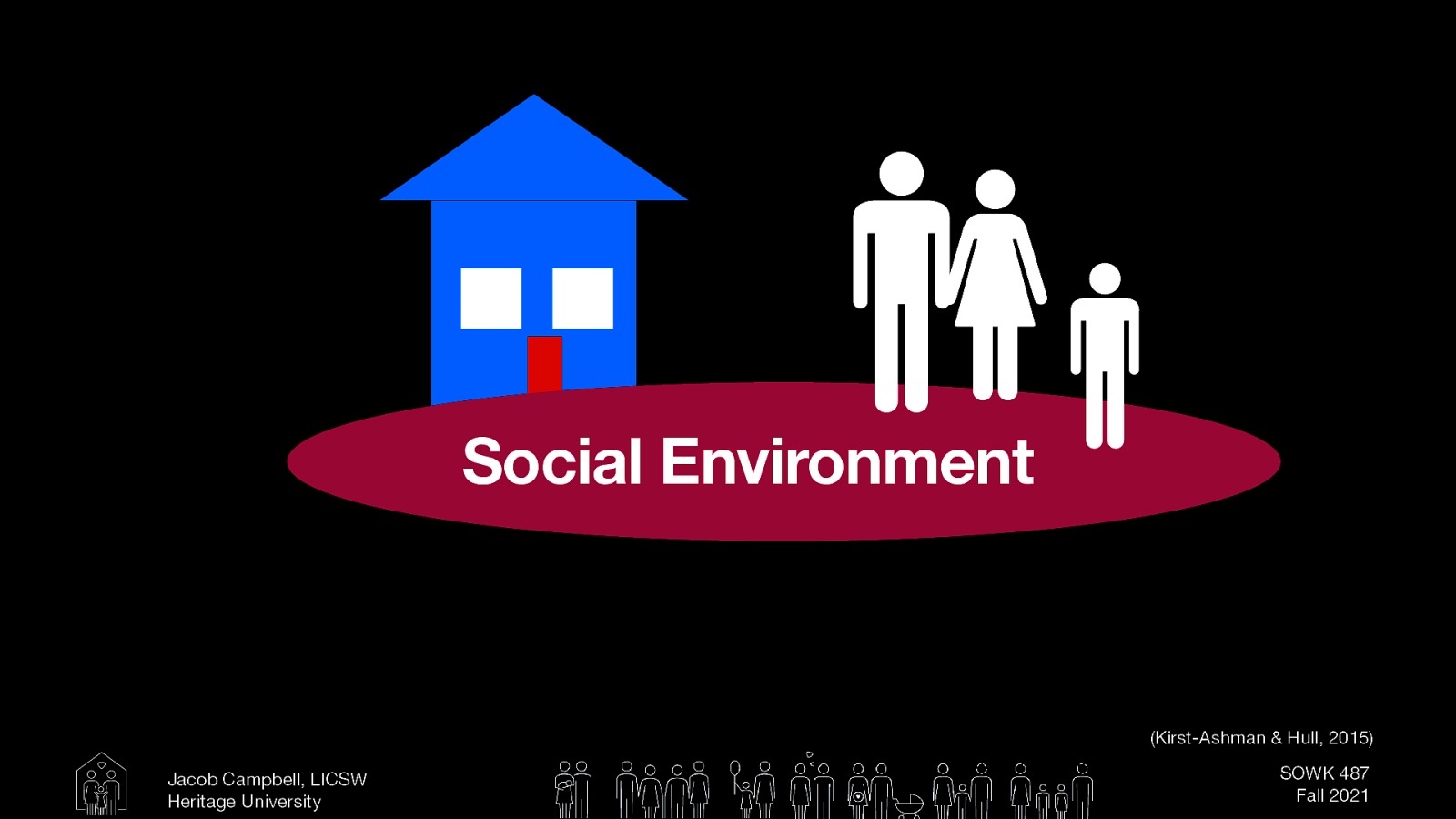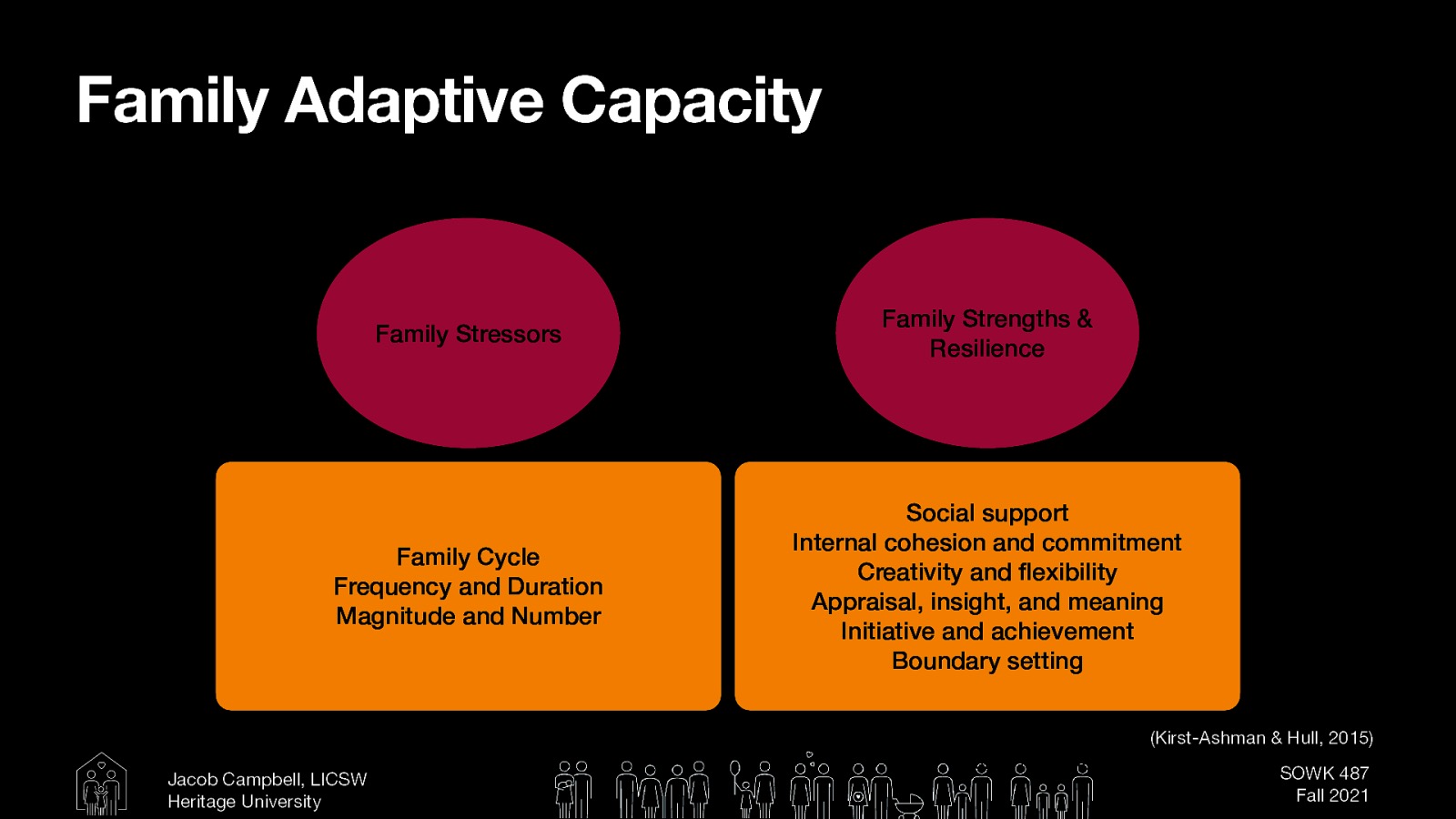SOWK 487 Week 04 - Working with Families Part I: Strengths and Assessments with Families
A presentation at Heritage University in January 2021 by Jacob Campbell and is tagged with Heritage University, BASW Program, SOWK 487w
Description
Week four, we move away from talking about groups in general and discussing a specific type of group, that of working with families. Students are expected to read Chovil (2009). We will also be talking about the dimensions of family assessment. These include (1) Homeostasis, (2) Boundaries and Boundary Maintenance, (3) Family Decision Making, Hierarchy, and Power, (4) Family Roles, (5) Communication Styles of Family Members (6) Family Life Cycle, (7) Family Rules, (8) Social Environment, and (9) Family Adaptive Capacity (Stressors and Strengths).
The agenda for this week is as follows:
- Strengths perspective and families
- Engagement and assessment with families
Reference
Chovil, N. (2009). Engaging families in child & youth mental health: A review of best, emerging and promising practices. The F.O.R.C.E. Society for Kids’ Mental Health, 44 pages. Available at https://www.nctsn.org/sites/default/files/resources/resource-guide/cac_engaging_families_in_child_and_youth_mental_health.pdf
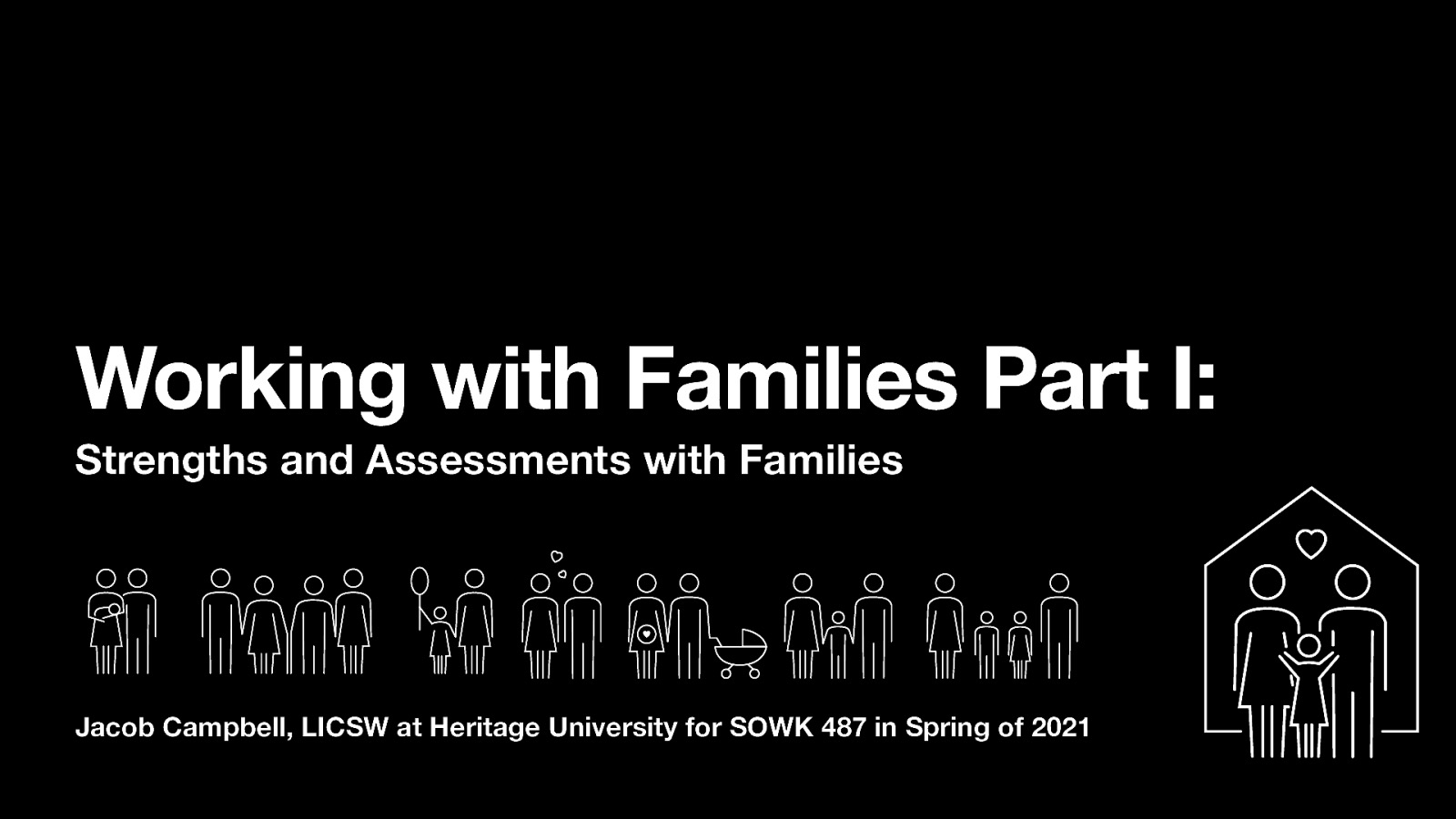
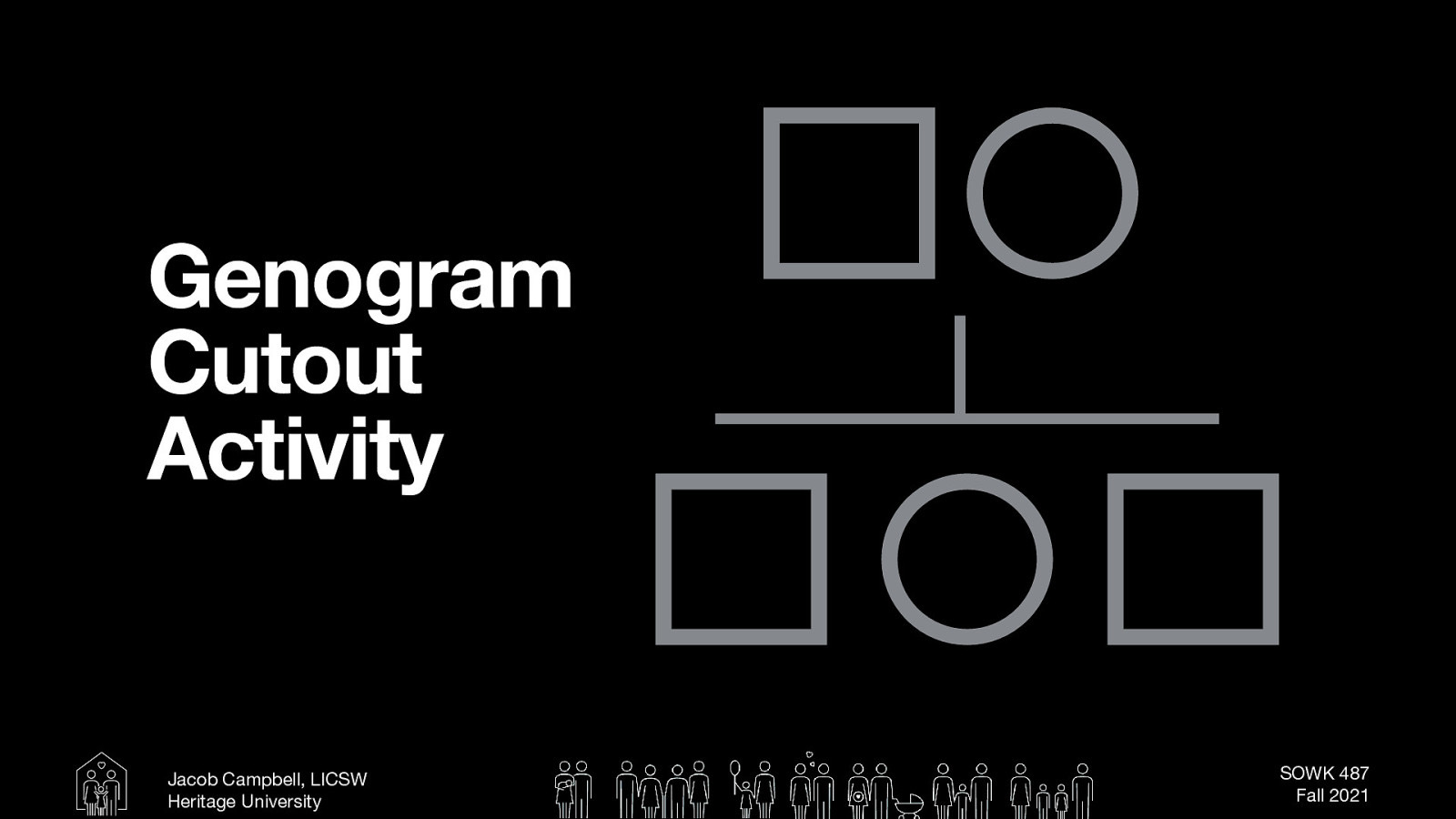
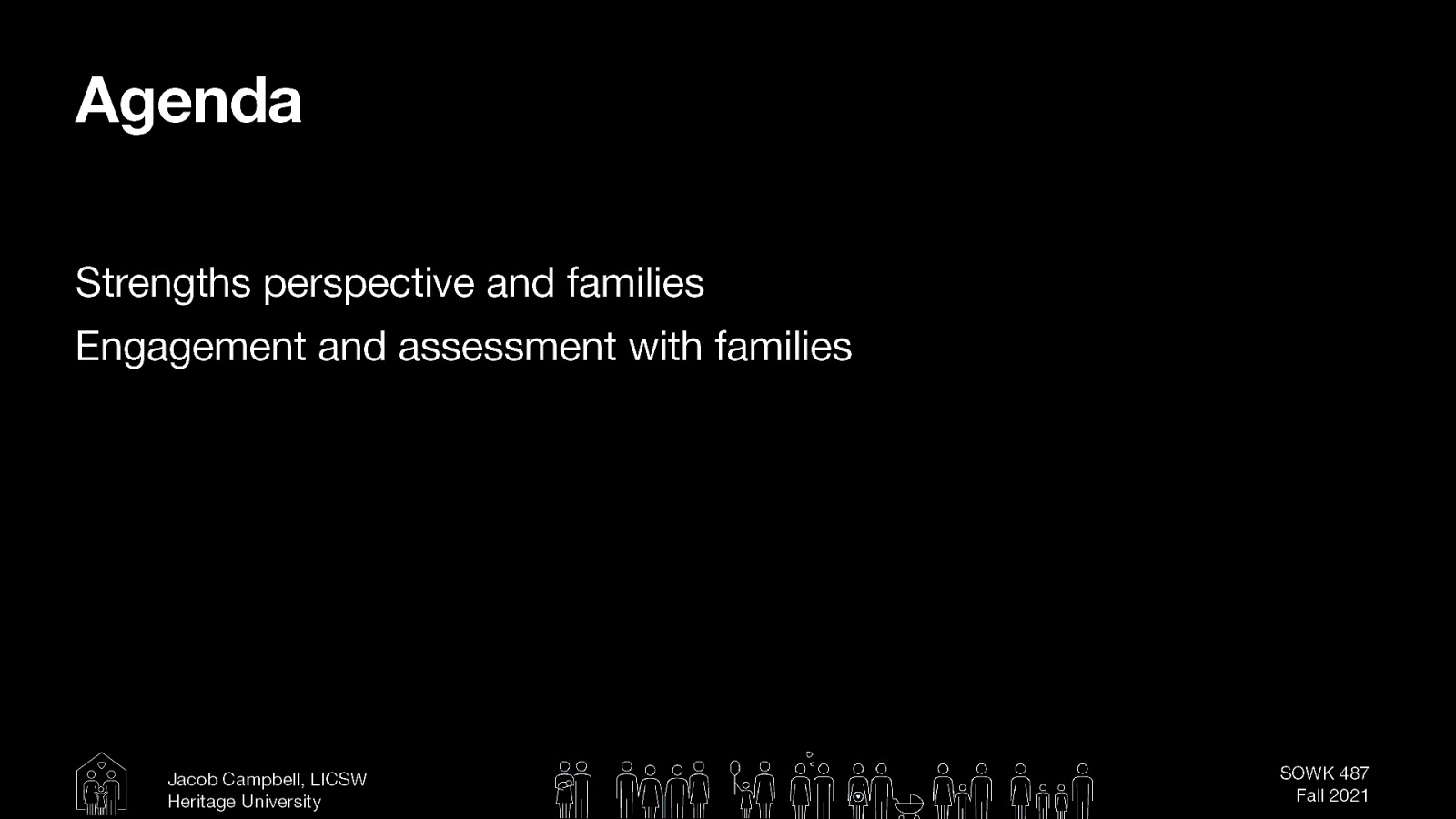
![National Court Appointed Special Advocate Association (2007) CASA volunteer training manual. Seattle, WA. Retrieved from http://www.casaofsantacruz.org/documents/files/assets/basic-html/page79.html Note 12 to 15 positive aspects of the household pictured. In the large group Share your observations [Discussion] What was difficult about this activity? [Discussion] Why would this be an important exercise?](https://presentations.jacobrcampbell.com/YsKGJP/deck-6284-large-3.jpeg)
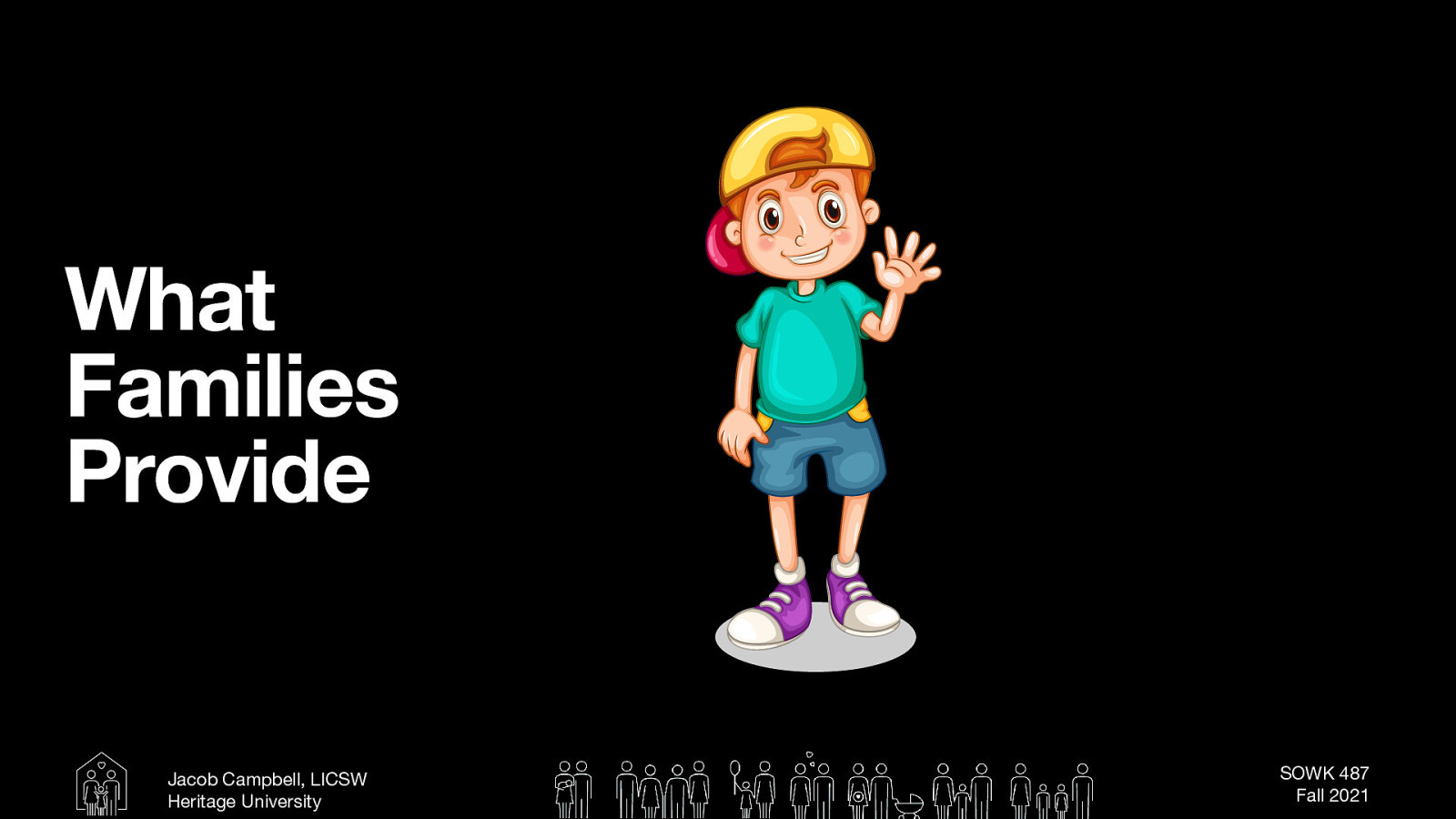
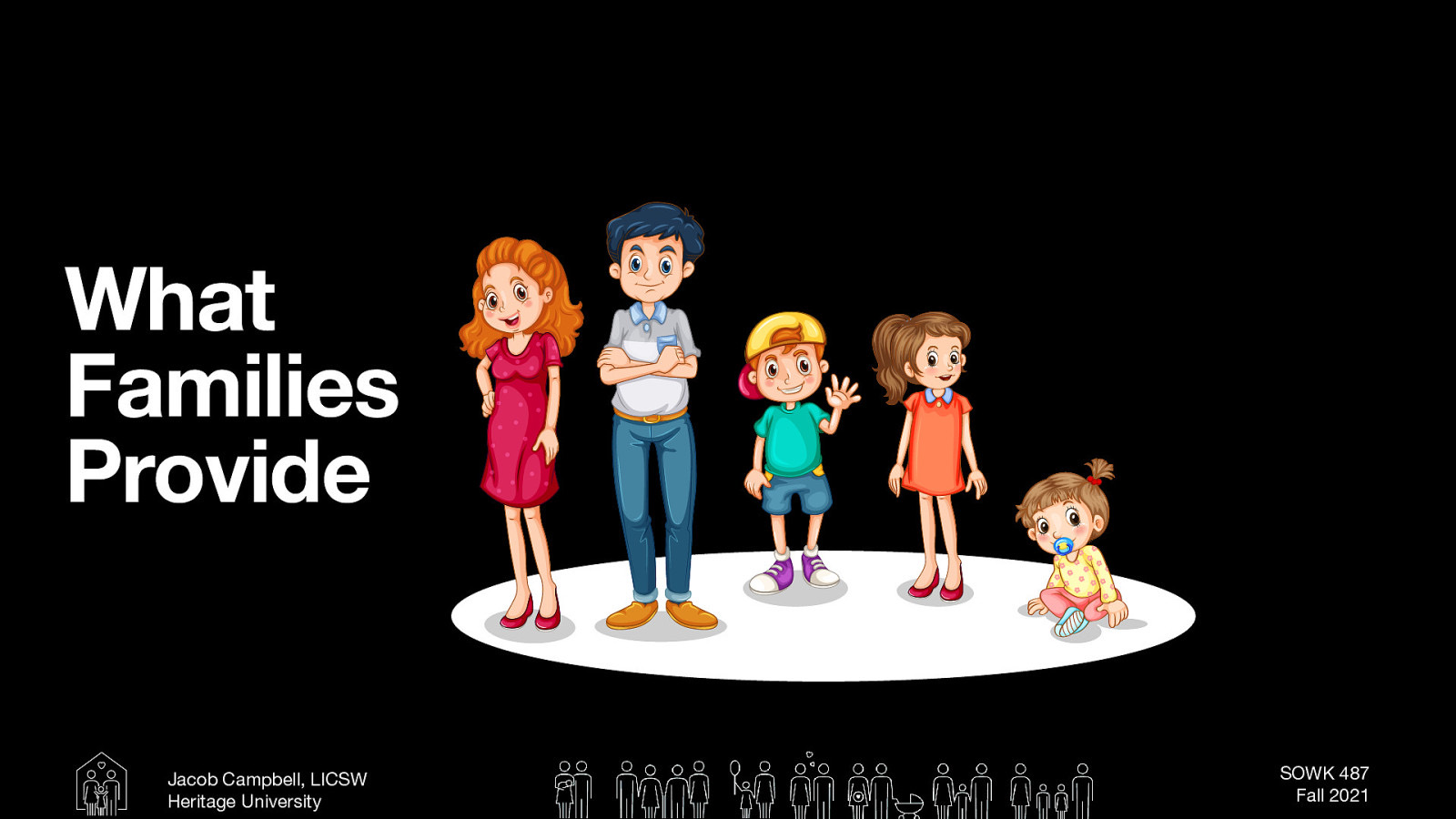
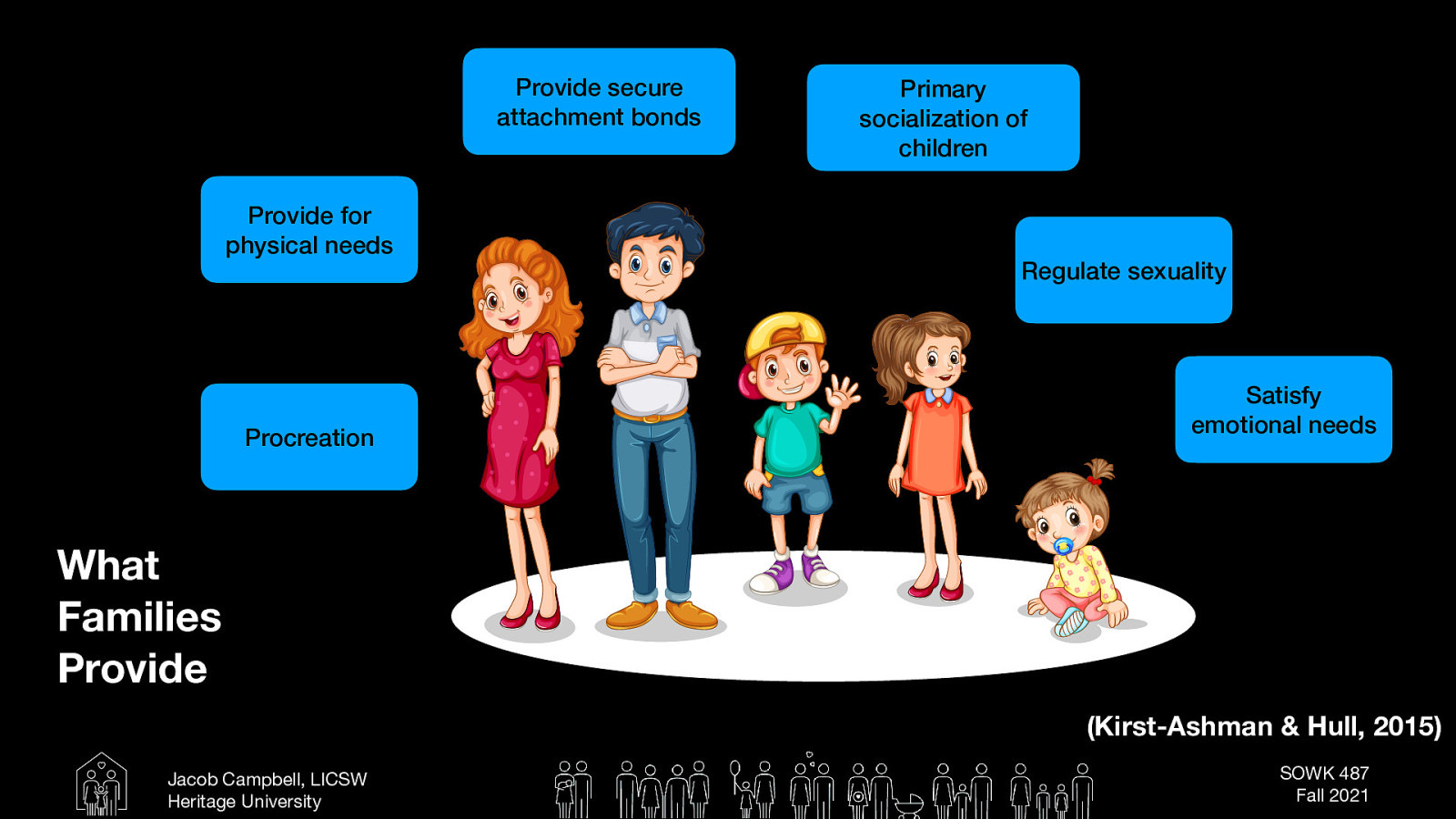
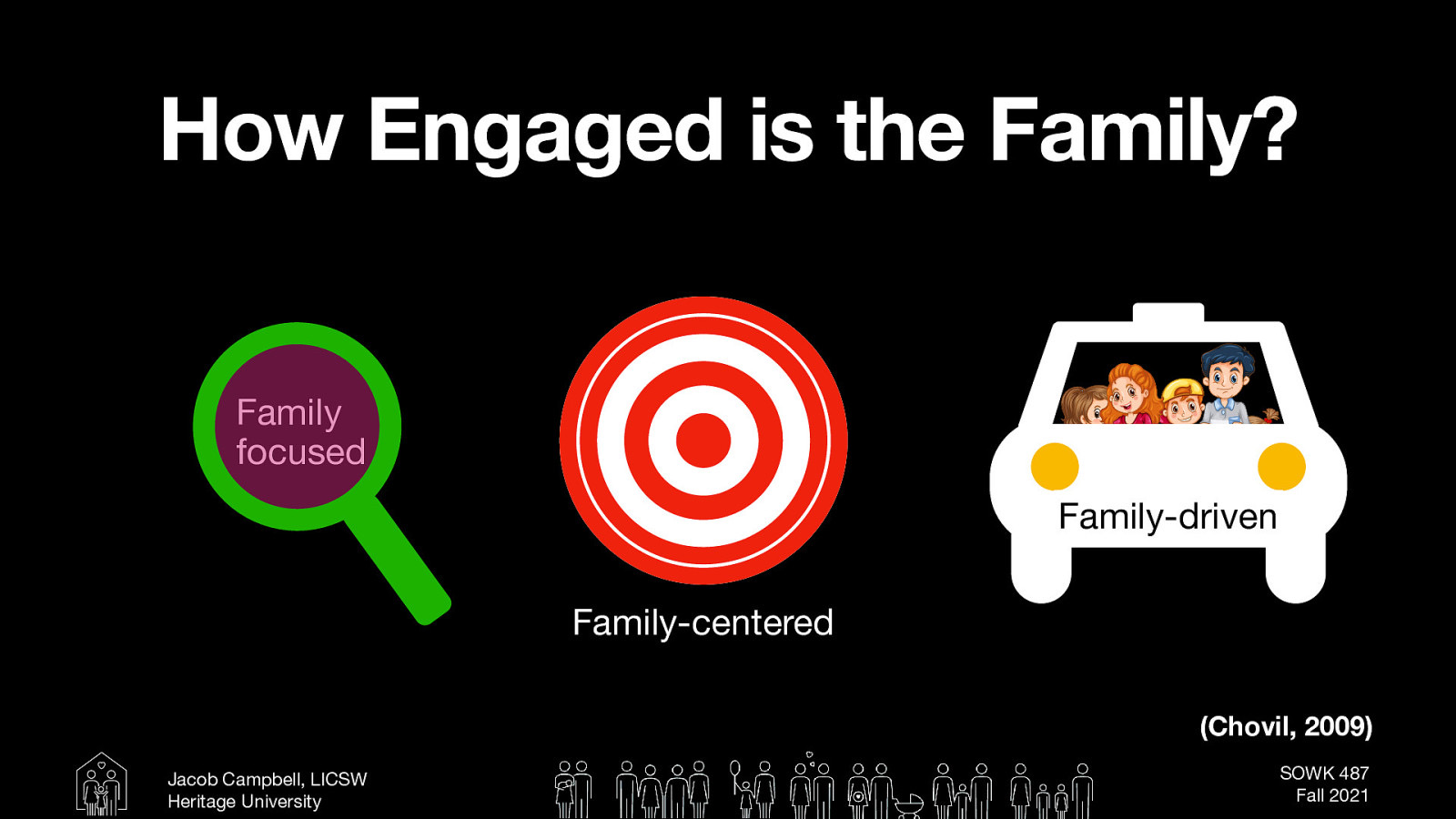
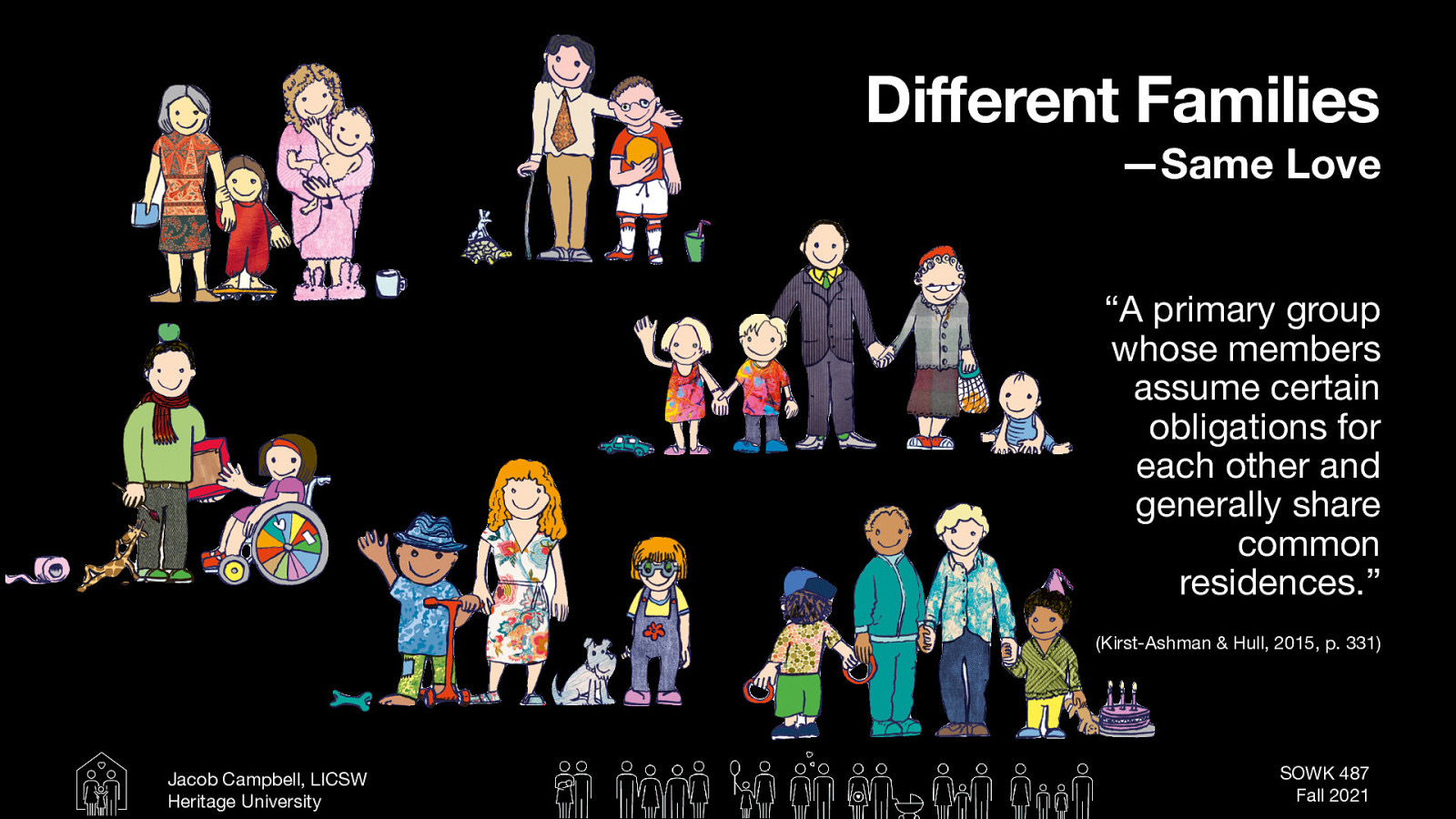
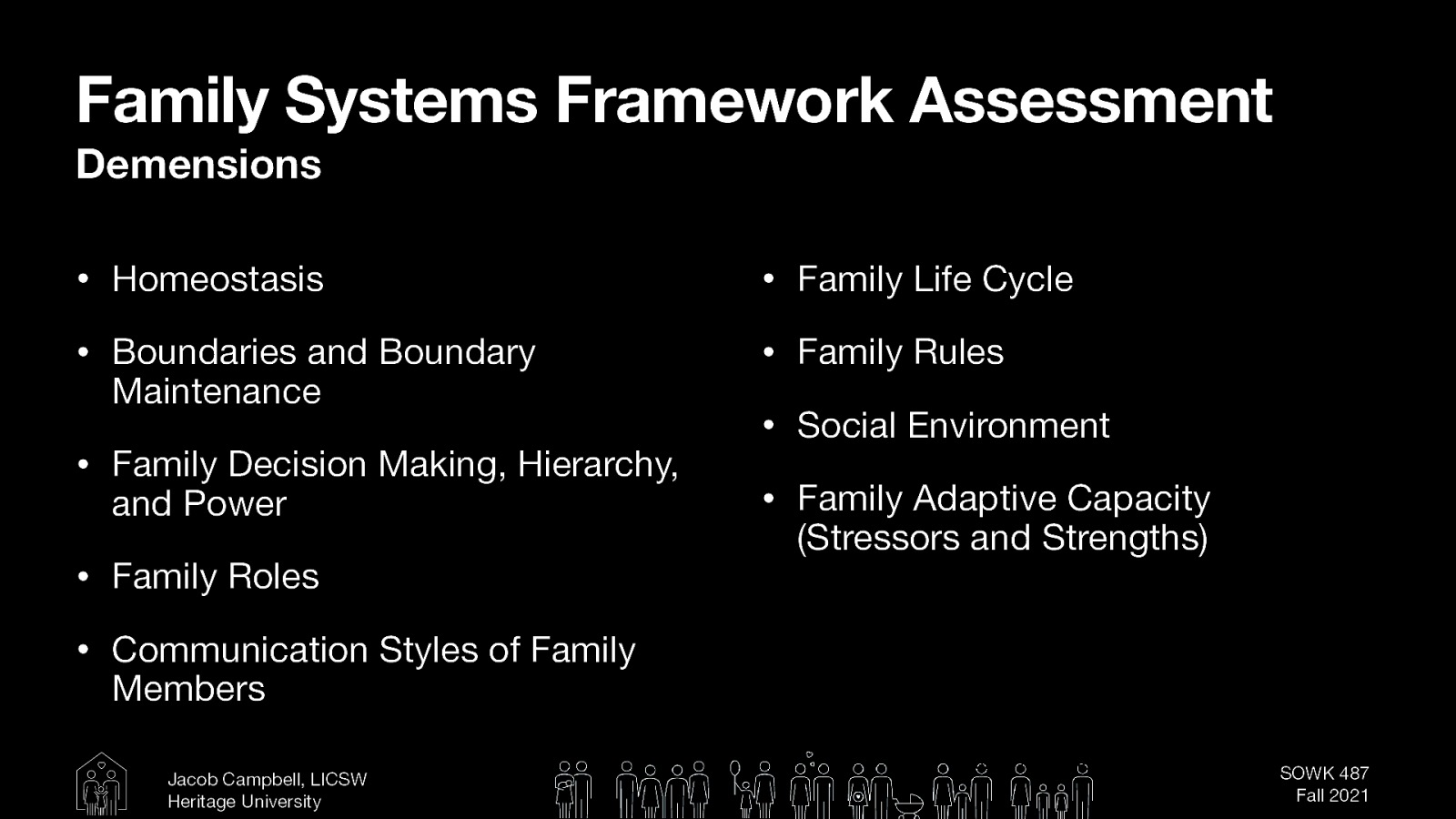
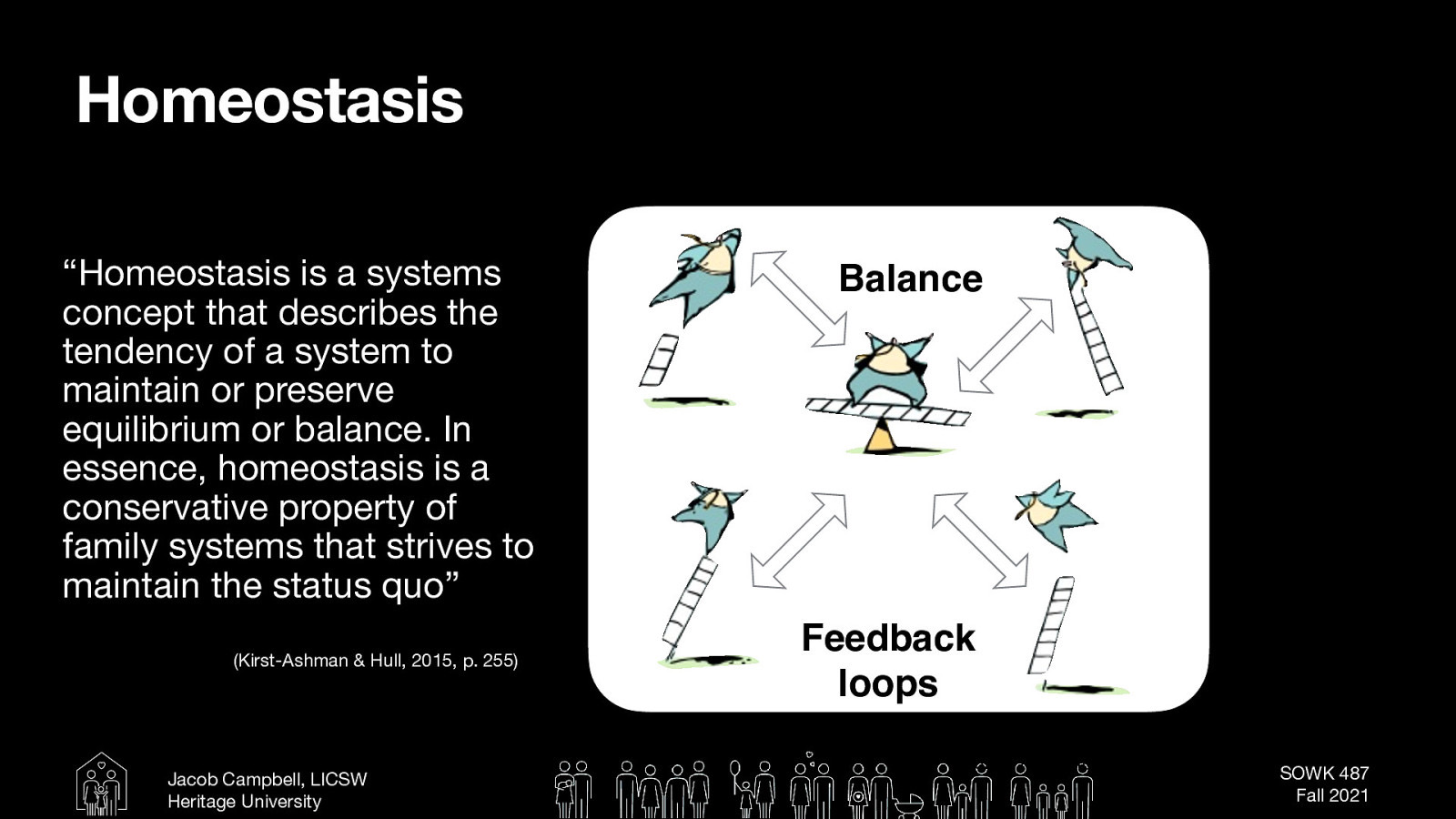

![Family decision making power, hierarchy and power are important aspects for a social worker to be assessing and to be cognizant of. When we think abut these parts, the following are some ways that we think about them: [Whole Class Activity] Discuss each topical area, and types of questions that you might ask? Historic / Context: How power has been distributed in the family in the past and whether changing conditions of the family are threatening the established power base (McGoldrick, 1998; Okun, Fried, & Okun, 1999) Reason for distribution: Whether the distribution of power is gender specific out of necessity for the family to survive in a hostile environment (Okun, Fried, & Okun, 1999) Covert power: To what extent power is covertly held by members who have aligned to form a power bloc, and to what extent covert power accrues to individual members who are manifesting extreme symptoms Power flexibility: The extent to which the family system allows power to be flexibly reallocated and permits roles to be adjusted to meet the demands of changing circumstances Family perspective: How members view the distribution of power in the family (even though the distribution is unequal, family members may be satisfied with the arrangement) The role of a family’s culture in determining the distribution of power (Congress & Kung, 2005)](https://presentations.jacobrcampbell.com/YsKGJP/deck-6284-large-12.jpeg)

![[Small Group Activity] With a partner, ask find out information about the members of their families, what types of roles people have, what are some of the values and norms. Remember to work on your interviewing skills as you are doing this fact finding. Members Roles Norms Rules Values](https://presentations.jacobrcampbell.com/YsKGJP/deck-6284-large-14.jpeg)
![Looking for patterns and styles of communication with in families is another important area to consider. This frequently means examining… Congruence and Clarity of Communication, which includes verbal, non-verbal and contextual. [Whole Class Activity - Discussion] What are some of the types of things that we are looking for verbally and non verbally (as discussed in micro skills last semester)? Especially in working with families, we are on the look out for patterns Watching for patterns Verbal communication patterns… Who talks a lot Who talks rarely What tone of voice does mom use with son… etc Nonverbal communication can involve facial expressions, eye contact, and posture Where do they all sit? How close do they sit [Story] Working for the CRC, and watching the seating for while doing family sessions. Using techniques Being warm, empathic, and genuine Using interviewing techniques. Family interaction and communication are more complicated because more individuals are involved. Looking for patterns and styles of communication with in families is another important area to consider. This frequently means examining…](https://presentations.jacobrcampbell.com/YsKGJP/deck-6284-large-15.jpeg)
![Insoo Kim Berg Solution-Focused Family Therapy Video. (2009, June 29). Insoo Kim Berg Solution-Focused Family Therapy Video. Retrieved from https://www.youtube.com/watch?v=6Fe8D0hAQh0 PsychotherapyNet. (2009, June 29). Insoo Kim Berg solution-focused family therapy video [Video]. YouTube. https://youtu.be/6Fe8D0hAQh0 We are going to watch a short video clip of Insoo Kim Berg doing family therapy. We are not watching necessary for techniques, but what do you observe about the verbal / nonverbal communication of the family. [Discussion] Does anybody know who Insoo Kim Berg is? Solution focused brief therapy [Discussion] What do you observe?](https://presentations.jacobrcampbell.com/YsKGJP/deck-6284-large-16.jpeg)
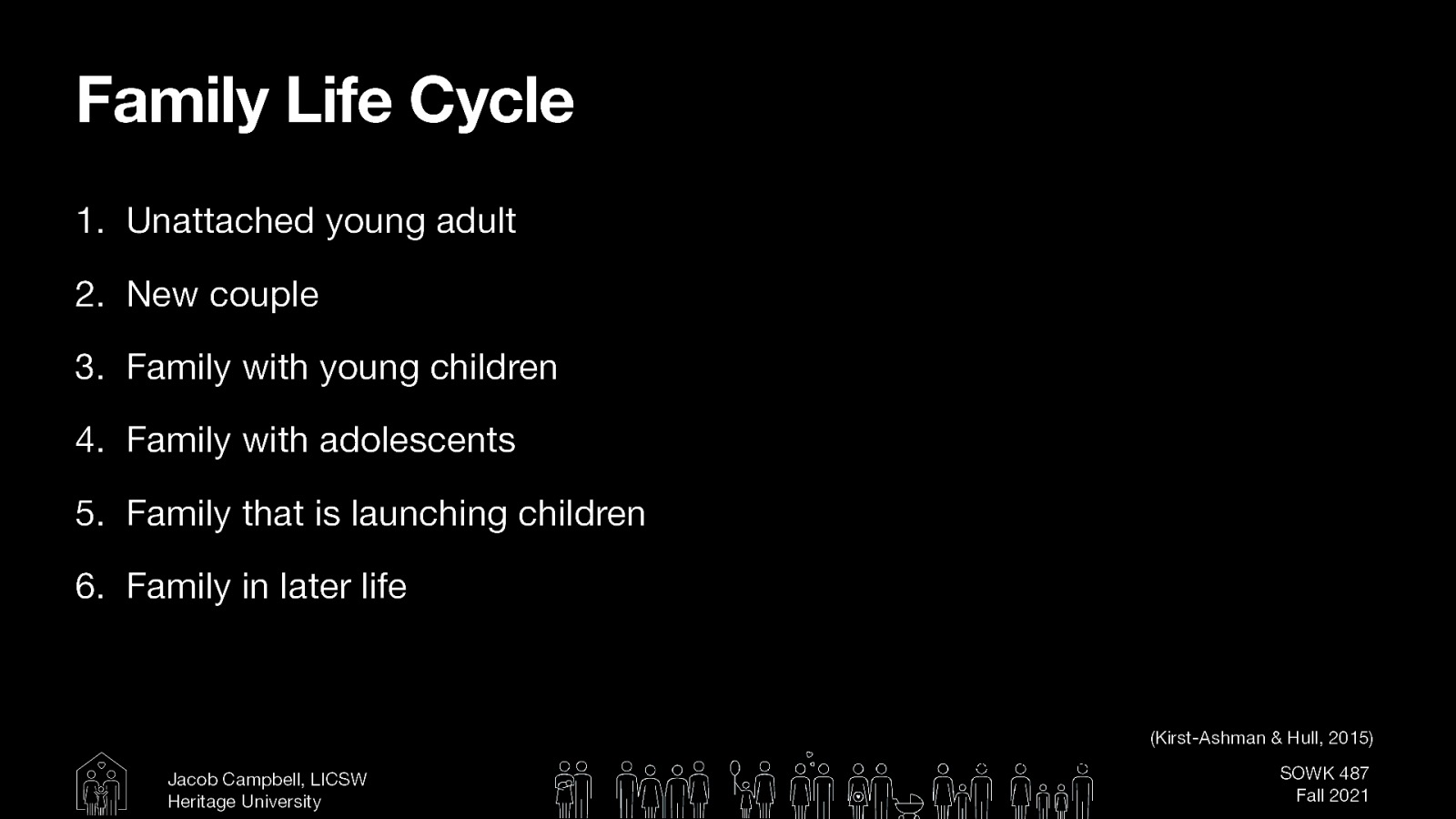
![The explicit and implicit rules found in a family system may be either flexible or rigid, depending on con- text and time. [Whole Class Activity] What are some rules that families might have?](https://presentations.jacobrcampbell.com/YsKGJP/deck-6284-large-18.jpeg)
